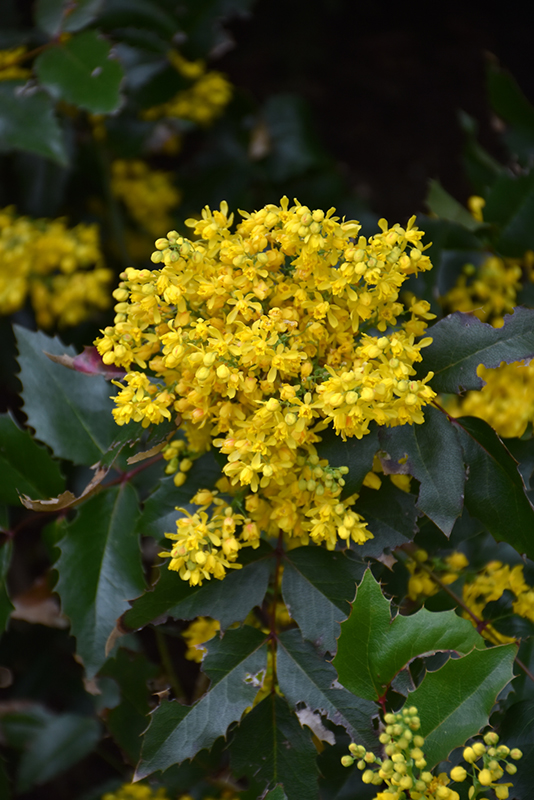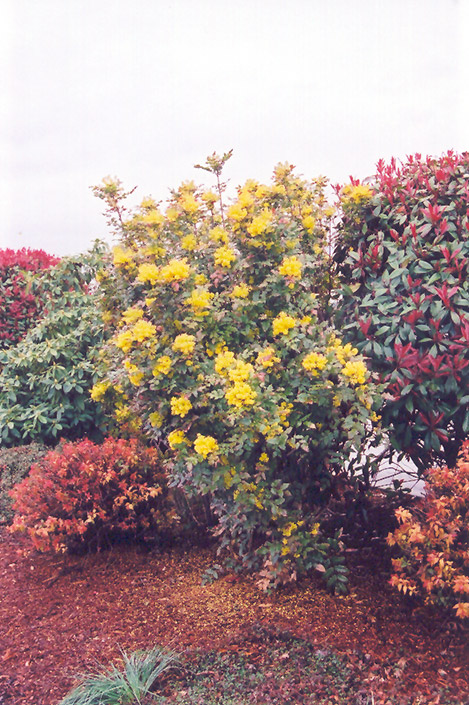Height: 5 feet
Spread: 4 feet
Sunlight:
![]()
![]()
Hardiness Zone: 5b
Other Names: Oregon Grape Holly
Description:
A very interesting mounded shrub with leathery, sharp holly-shaped leaves; showy yellow flowers in spring and very attractive purple grape-like fruit in late summer; somewhat fussy, needs moist acid soils, some shade and protection from winter winds
Ornamental Features
Oregon Grape is primarily grown for its highly ornamental fruit. It features an abundance of magnificent blue berries from mid summer to early fall. It features showy racemes of fragrant yellow flowers hanging below the branches in early spring. It has dark green evergreen foliage which emerges burgundy in spring. The spiny pinnately compound leaves turn an outstanding coppery-bronze in the fall, which persists throughout the winter.
Landscape Attributes
Oregon Grape is a dense multi-stemmed evergreen shrub with a ground-hugging habit of growth. Its relatively fine texture sets it apart from other landscape plants with less refined foliage.
This shrub will require occasional maintenance and upkeep, and can be pruned at anytime. Deer don't particularly care for this plant and will usually leave it alone in favor of tastier treats. Gardeners should be aware of the following characteristic(s) that may warrant special consideration;
- Suckering
Oregon Grape is recommended for the following landscape applications;
- General Garden Use
- Naturalizing And Woodland Gardens
Planting & Growing
Oregon Grape will grow to be about 5 feet tall at maturity, with a spread of 4 feet. It tends to fill out right to the ground and therefore doesn't necessarily require facer plants in front, and is suitable for planting under power lines. It grows at a slow rate, and under ideal conditions can be expected to live for approximately 30 years.
This shrub does best in a location that gets morning sunlight but is shaded from the hot afternoon sun, although it will also grow in full shade. Keep it away from hot, dry locations that receive direct afternoon sun or which get reflected sunlight, such as against the south side of a white wall. It prefers to grow in average to moist conditions, and shouldn't be allowed to dry out. It may require supplemental watering during periods of drought or extended heat. It is not particular as to soil type, but has a definite preference for acidic soils, and is subject to chlorosis (yellowing) of the foliage in alkaline soils. It is somewhat tolerant of urban pollution, and will benefit from being planted in a relatively sheltered location. Consider applying a thick mulch around the root zone in winter to protect it in exposed locations or colder microclimates. This species is native to parts of North America.


